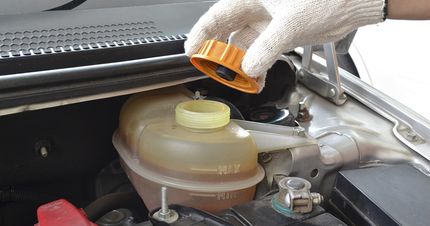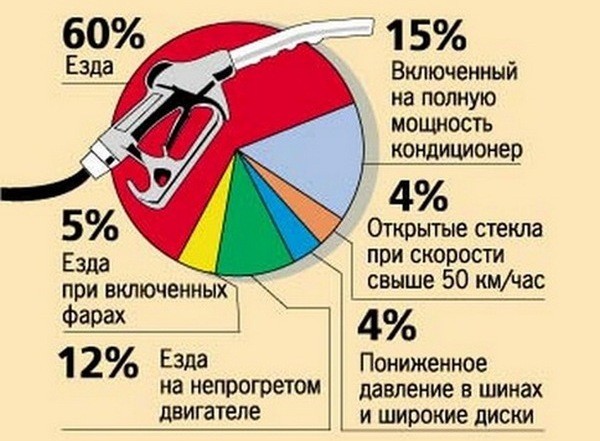
Adding coolant to the engine - how to do it?
Content
Regular inspection of the technical condition of components is the routine work of every driver. Usually in well-maintained specimens, it will not be a problem for you to check the engine oil level or top up the coolant. Such events should be carried out independently and not postponed until a failure is detected. Why is it so important? Find out why it is important to add coolant to your radiator and how to top it up. Read our guide!
The role of coolant in the engine
The coolant is responsible for maintaining a constant operating temperature of the drive unit. It circulates inside the cylinder block and cylinder head, receiving excess heat from the combustion of the fuel. Thanks to him, the design does not overheat and is able to work for a long time at optimal temperatures. In new and very economical vehicles, the addition of coolant is very rare and usually involves a small amount of the substance. However, it happens that the liquid leaves faster and it is necessary to constantly monitor its level. Why is this happening?
Can coolant leak?
If there is a significant loss of refrigerant, it is usually due to leaks. This substance circulates in the so-called. small and large systems, which include elements such as:
- cooler;
- rubber hoses;
- heater;
- engine block and head;
- thermostat.
In principle, each of these elements is at risk of damage or leakage. And then it may be necessary to add coolant. Small amounts can also leave the system by evaporation, but this is not as dangerous.
Adding coolant - why is it important?
Looking at the expansion tank, you can see a scale for measuring the volume of liquid. Usually the "MIN-MAX" range is not too large. So there is little chance of error. A certain amount of fluid is poured into each system of the car. Too low a volume will cause the drive to overheat. Even more dangerous is a very large deficit. In extreme cases, this can even cause the engine to seize.
How much coolant is in the system?
It depends on the specific vehicle and manufacturer's assumptions. However, usually it is 4-6 liters. These values refer to vehicles with smaller 3- and 4-cylinder units, i.e. city cars and the C segment. The larger the engines, the more difficult it is to maintain their temperature at the appropriate level. Topping up the coolant in such units is necessary, especially if there are minor leaks. In popular V6 units (for example, Audi's 2.7 BiTurbo), the system volume is 9,7 liters. And the Bugatti Veyron Super Sport's W16 space engine requires as much as 60 liters of fluid in two systems.
Coolant filler cap - where is it located?
Most cars have an expansion tank. Coolant can be added through this reservoir. It is usually located on the right side of the engine compartment. You can search for it by standing in front of the car's front bumper. It is black, yellow or blue. It is labeled to warn of high temperatures and the risk of burns. It is very easy to recognize because it is usually located on a transparent tank where the liquid level is visible.
Adding coolant
How to add coolant? Topping up the coolant is not a difficult operation, the main thing is that the substance in the engine does not boil. Under standard conditions, a small reduction in fluid volume can be topped up with the engine off and through the expansion tank. You will need to park your vehicle on a level surface to reliably measure the fluid level. Filling the right amount of substance, it is enough to tighten the cork.
How to mix cold and hot substances?
However, it may happen that you notice that the engine temperature is too high while driving. After checking the fluid level, you will notice that it is too low. What to do then? Adding cold coolant to a hot expansion tank is dangerous. So follow the instructions.
- First, slowly unscrew the lid to allow some hot air to escape.
- Then pour in the liquid in a thin stream.
- Remember to do this with the engine running! Otherwise, a large amount of cool liquid can even cause permanent damage to the block, head or gasket underneath.
How to add coolant to the radiator?
Very large fluid losses are replenished by the filler neck in the radiator. You must first find it, and then start adding fluid to the system. This operation is performed with the engine off and cold. After filling the medium, start the unit and allow the pump to refill the system with liquid. After a few minutes, check the fluid level in the reservoir and use it to add coolant to the optimum level.
Adding coolant and replacing it with water
Adding coolant to the radiator is usually associated with emergency situations. Therefore, if there is no coolant on hand, distilled water can be used. Can water be added to coolant? In extreme cases, and only in a hopeless situation, you can add ordinary bottled or tap water. However, this carries the risk of contamination of the system and corrosion of the elements. Remember that some components are made from metals that oxidize, and water speeds up this process. Also, leaving water in the system over the winter can cause the block or head to rupture.
Can coolant be mixed with water?
Sometimes there is no other way out, especially when there is a leak and you need to somehow get to the nearest garage. However, under normal circumstances, the liquid should not be mixed with water. Adding coolant, even a different color, does not harm the engine, but water changes the properties of the substance and lowers its boiling point. It also contributes to corrosion and fouling of the system. Therefore, pouring water into the cooling system is not the best idea if you care about your car.
The fact that you have to add coolant often means only one thing - there is a leak in the system. Sometimes it can be more serious and indicates a blown head gasket. Adding coolant, which is still low, will not solve the problem. Go to the workshop and determine what the problem is.
